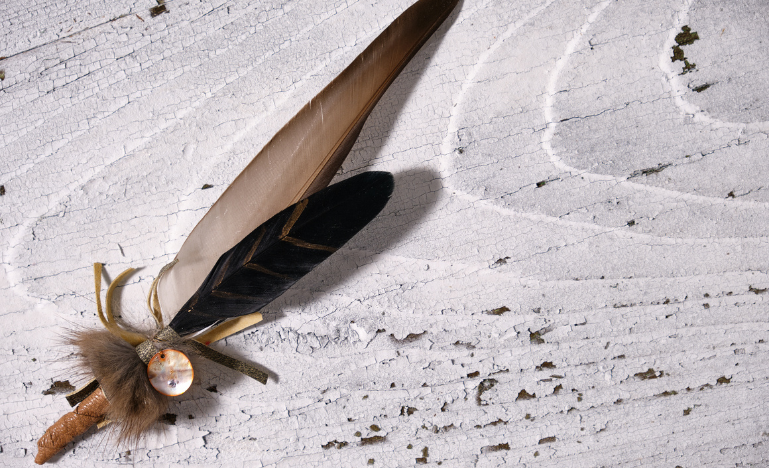Aboriginal and Indigenous Law: Why you need to know the difference
Understanding the distinction isn’t just academic—it’s an ethical responsibility

Indigenous law and Aboriginal law are terms that are often conflated and used interchangeably. However, as legal systems originating from different sources and reflecting diverse worldviews, they are not the same.
Five years ago, Terence Sakohianisak Douglas was working on a case that required him to grasp the difference.
As legal counsel for the Wabaseemoong Child Welfare Authority in Kenora, Ontario, he came to understand that Aboriginal law refers to Canadian state law that governs Indigenous-state relations, including the unique constitutional rights of Aboriginal Peoples and their relationship with the Crown.
Indigenous law is more community-based, involving distinct legal traditions and governance systems rooted in Indigenous Peoples’ relationships to the land, the spirit world, customs, teachings, and other aspects of their culture.
“It’s not just a law. It’s who they are as a people. If you’re working with that, you have to show the appropriate respect,” says Douglas, who was part of a lengthy panel discussion on the topic last month at the Canadian Bar Association’s Aboriginal Law Conference in Winnipeg.
“From that point on, I adopted a motto for myself: Talk less, listen more, and be humble. Because I need to understand that I don’t know everything.”
Understanding the distinction is not just academic—it’s an ethical responsibility. As Canada works towards reconciliation, legal professionals have a critical role in advancing justice, legitimacy, and ethical practice in a plural legal system.
Panel co-moderator Danielle Morrison, an associate with Cochrane Sinclair in Winnipeg, says it can start with how lawyers promote their own services.
She’s noticed firm websites that have changed their ‘Aboriginal law’ practice to ‘Indigenous law,’ perhaps thinking it’s the politically correct thing to do.
“I’ve seen a lot of law firms do this…but it’s ethically irresponsible,” she says, as the two terms are not interchangeable."
Ultimately, Indigenous law is rooted in community.
“When we say we practice Indigenous law, it’s not all Indigenous laws,” says Genevieve Benoit, an associate at Winnipeg’s MN Trachtenberg Law Corporation, who co-moderated the panel.
“It’s helping community, and only certain communities develop their laws. But we’re not the ones controlling the laws. There are processes involved.”
Community understanding is key
Janell Jackson, a University of Manitoba law student and co-chair of the Manitoba Bar Association’s equality section, says Aboriginal law is tied to treaties and very much based on the treaty relationships developed by forefathers, while guided by Indigenous law.
“For anyone to say, in this day and age, ‘we’re going to synthesize what Indigenous law is and we are going to categorize it and just lay it all out…’ That’s just not going to happen,” she says.
“It’s a beautiful conversation to be a part of, and it’s a beautiful understanding to grapple and to sit and to ponder.”
Jackson says pipes, feathers, lodges, medicine bags and prayers are all key in Indigenous law, which is “very specific to the people.”
That was evident in a British Columbia case she was part of, which involved a provincial energy provider and a major pipeline company.
“A member of a community affected by this project challenged the proponent, saying, ‘You’re on my trapline territory. That trapline has been a part of our family long before you ever came here, and it’s going to be here long after you leave.’”
It took several months of feasting and praying together, but a relationship was built, and ultimately, a settlement was achieved.
“That family not only was financially compensated… we were able to stickhandle the complexities of our nation,” Jackson says.
An offering of trust and respect
A meaningful way to show respect when working with Indigenous communities goes back to the traditional offering of tobacco. It may be offered when asking for help, guidance, or protection. It’s seen as a sincere contract or agreement, binding both parties to their roles and obligations. “
I had to come in [on a case] and ask to practice, as a non-member of a nation. I did that with a certain grand chief,” Douglas says.
“He accepted my tobacco, so I felt comfortable to be able to practice. I didn’t want to meddle in the affairs of another nation if I didn’t have permission.”
Eric Fisher, co-executive director of the Wabaseemoong Child Welfare Authority, echoed that sentiment.
“We feel pride when we receive tobacco. It’s the number one offering you make to the elders and to the spirits,” he says.
“It means this person is trustworthy and that I can speak openly to the person who offered it.”
Meeting an ethical responsibility
Learning more about Indigenous law and where it fits into and around Aboriginal law isn’t just valuable, it’s crucial –– whether you’re Indigenous or not. Acknowledging and respecting its importance is a significant step.
“You’ve got to leave your ego out of it. Don’t take anything personally,” Morrison says.
“You have to understand that when non-Indigenous people come into our communities, there’s a lot of distrust. That’s because we have a history of non-Indigenous people coming in wanting to exploit resources. So you have to acknowledge those feelings.”

